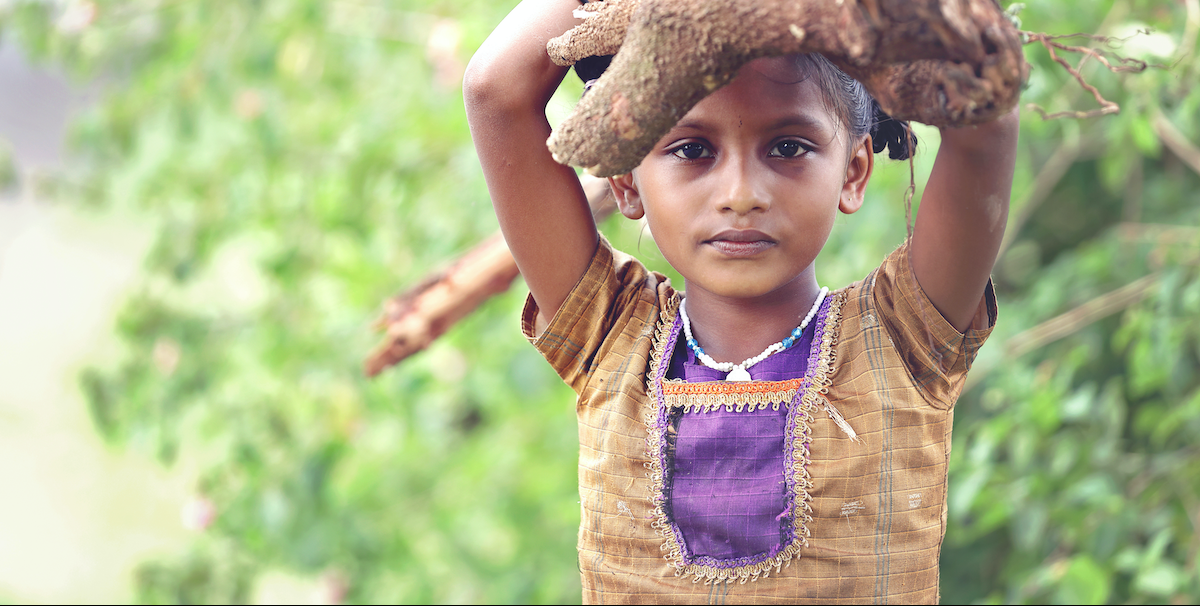
About Child Labor
A child is defined as every human being below the age of 18 years, unless under the law applied to the child, majority is attained earlier. Child labor is defined by the International Labour Organization (ILO) as “work that deprives children of their childhood, their potential and their dignity, and that is harmful to physical and mental development.” In 1999, the ILO led the Worst Forms Convention, signed by 181 countries, which prohibits the worst forms of child labor such as:
- Debt Bondage
- Child Trafficking
- All forms of Slavery or Slavery-like practices
- Forced Recruitment of Children in Armed Conflict
- Prostitution
- Drug Production and Trafficking
- Any Hazardous Work
In 1990, the United Nations adopted the Convention on the Rights of a Child which became the most widely and rapidly ratified international treaty. To date, 196 countries have signed it. Although the United States has signed the treaty, they have not ratified this important treaty. According to a study conducted by the ILO in 2004, the benefits of eradicating child labor would “outweigh costs by nearly six to one.”
Child Labor Data
- According to the ILO, 160 million children, or almost one out of ten children worldwide, are engaged in child labor as of the beginning of 2020. Of these, 89 million are 5 to 11 years old (ILO, 2021). In 2000, the estimate was 246 million child laborers worldwide.
- Of the 160 million child laborers, 79 million, or almost half the total, are engaged in what the ILO deems “hazardous work.” 25.8 million children are age 5 to 11 (ILO, 2021).
- Of the 40 million trapped in modern slavery, including forced labor and marriage, ten million are children. There are 5.5 million child slaves (forced laborers). In 2016, data showed that number decreasing to 5.1 million for the first time in a decade.
- Forced child labor is defined by the ILO as work “performed by a child under coercion applied by a third party (other than his or her parents) either to the child or to the child’s parents” or a direct consequence of parental engagement in forced labor.
- Each year, 1.2 million children are trafficked for forced labor, including work in the sex trade.
- About 48.7 million all child laborers are in Asia and the Pacific (ILO, 2021).
- There are 92.2 million child laborers in Africa, more than all the other regions combined (ILO, 2021).
- Together, the African, Asian and Pacific regions have nine out of every ten child laborers.
- Other “hot spot” regions for child labor are the Americas with 8.3 million child laborers and Europe and Central Asia 8.3 million child laborers (ILO, 2021).
- Agriculture remains by far the sector where most child laborers can be found (112 million, or 70% according to the ILO, 2021). Most children work on farms that produce consumer products such as cocoa, coffee, cotton, rubber and other crops. This is split between subsistence and commercial farming in addition to livestock.
- Children are also commonly employed as domestic servants, in brick kilns, in mining mica, coal, and other minerals and in factories that make garments, carpets, toys, matches and hand-rolled cigarettes. The United Nations Convention on Transnational Organized Crime’s protocol to prevent trafficking of children and women has 147 signatories and 189 parties, which is insufficient to reach the ambitious SDGs pertaining to safety.
- One out of every four of the estimated 40 million slaves across the world today is a child.
Data on Other Child Rights Abuses
- At the end of 2018, 258 million children, adolescents and youth were out of school. This represents one sixth of the global population of this age group. The total number of out-of-school children and youth has declined by little more than 1 million per year since 2015. Some 59 million, or 23% of the total, are children of primary school age (about 6 to 11 years old); 62 million, or 24% of the total, are adolescents of lower secondary school age (about 12 to 14 years old); and 138 million, or 53% of the total, are youth of upper secondary school age (about 15 to 17 years old).
- Of the 40 million people in slavery, one in four victims were children. Children represented 18% of those subjected to forced labour and 7% of people forced to work by state authorities. 15 million of the people in modern slavery are in forced marriages, of which 37% (5.7 million) were children. Children who were in commercial sexual exploitation (where the victim is a child, there is no requirement of force) represented 21% of total victims in this category of abuse.
- As of 2020, 35 million children were forcibly displaced due to conflict, instability, and disasters. An estimated 13 million of displaced children are refugees. Between 2018 and 2020, almost 1 million children were born as refugees.
- Refugee children are five times less likely to attend school than other children.
https://www.state.gov/documents/organization/258876.pdf
https://data.unicef.org/topic/child-migration-and-displacement/displacement/
http://www.ilo.org/global/about-the-ilo/newsroom/news/WCMS_574717/lang–en/index.htm
http://www.ilo.org/global/topics/child-labour/lang–en/index.htm
https://www.unodc.org/unodc/en/organized-crime/intro/UNTOC.html
https://www.globalpartnership.org/data-and-results/education-data#title18
https://www.worldatlas.com/articles/worst-countries-for-child-labor.html
Global Estimates of Modern Slavery 2017
